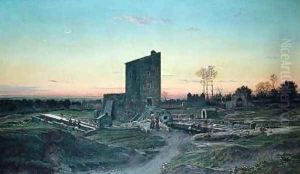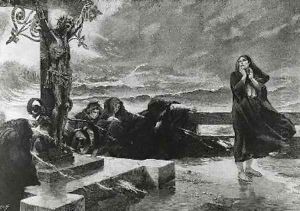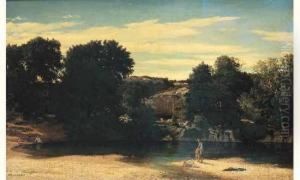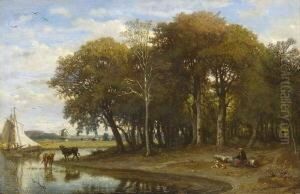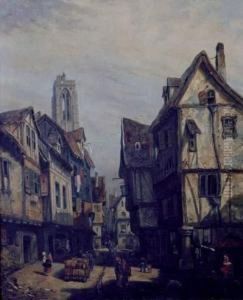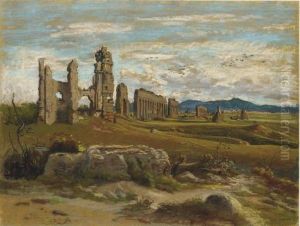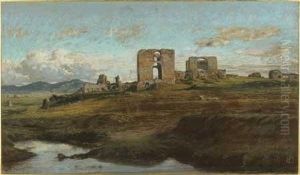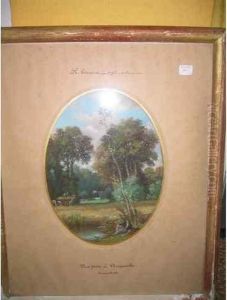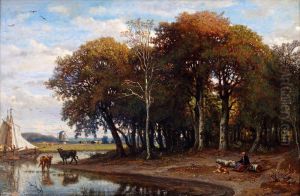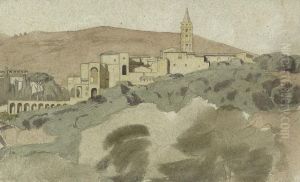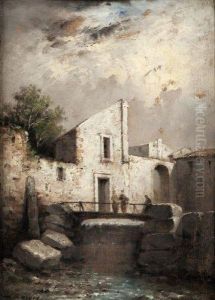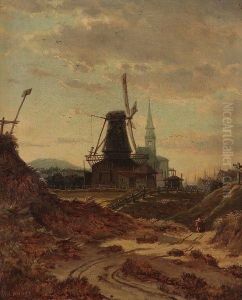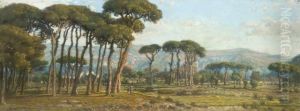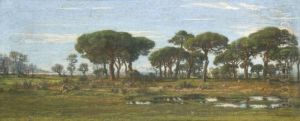Felix Hippolyte Lanoue Paintings
Felix Hippolyte Lanoue was a French artist born in 1812, during a period of significant social and artistic changes in France and across Europe. Lanoue's life and work were deeply influenced by the Romantic movement, which was sweeping through the arts during his formative years, emphasizing emotion, individualism, and nature. Despite the prominence of Romanticism, Lanoue also witnessed the burgeoning shift towards Realism in art, which focused on depicting contemporary life and society with a critical eye.
Lanoue embarked on his artistic career at a relatively young age, studying under prominent teachers of the time. His education was typical of the period, focusing on classical themes, but he soon developed a distinctive style that blended traditional techniques with a more modern sensitivity to light, color, and composition. Lanoue's works often featured landscapes and rural scenes, reflecting a fascination with nature and the countryside, which was a common motif among artists seeking to escape the industrialization of cities.
Throughout his career, Lanoue exhibited his works in various salons and galleries, gaining recognition and respect among his peers and art critics. His paintings were known for their detailed realism, vibrant use of color, and the emotional depth they conveyed, attributes that made his work stand out during a time of significant artistic evolution.
Despite his success, Lanoue's life was not without challenges. The political turmoil and social changes occurring in France during his lifetime, including the 1848 Revolution and the establishment of the Second French Empire under Napoleon III, had a profound impact on the art world. These events influenced the themes and techniques artists employed, pushing Lanoue to adapt and evolve his style to reflect the changing times.
Felix Hippolyte Lanoue died in 1872, leaving behind a legacy that, although not as widely recognized as some of his contemporaries, contributed significantly to the transition between Romanticism and Realism in French art. His works continue to be studied and appreciated for their beauty, technical skill, and historical value, offering insights into a pivotal period in the history of European art.
